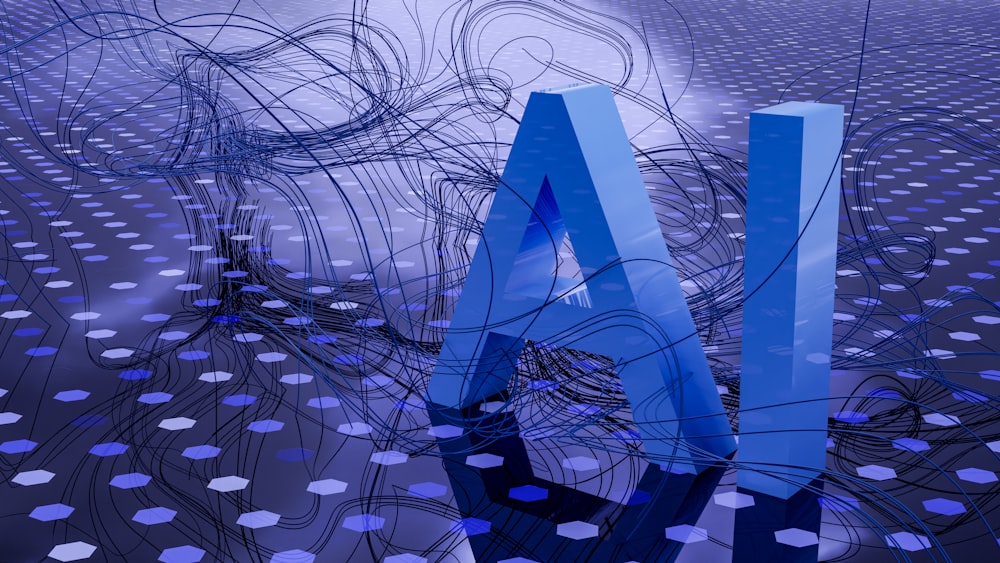As we stand on the precipice of 2025, the digital landscape is not just evolving; it’s undergoing a seismic transformation. The once-distinct lines between human capability and artificial intelligence are blurring at an unprecedented rate, giving rise to a new era of intelligent automation. What does the future hold for businesses and individuals navigating this brave new world? The coming year promises to be a defining moment, where AI transitions from a supportive tool to a core driver of innovation, strategy, and daily operations. This article delves into the most significant AI and automation trends poised to reshape industries, redefine work, and revolutionize our interaction with technology.
📚 Table of Contents
- ✅ Hyperautomation Becomes the Business Norm
- ✅ The Generative AI Evolution: Beyond Content Creation
- ✅ The Rise of Autonomous AI Agents
- ✅ Multimodal AI Models: The New Standard
- ✅ Sustainable and Green AI
- ✅ AI Governance and Ethical Frameworks
- ✅ Augmented Working and the Human-AI Collaboration
- ✅ Edge AI and the Decentralization of Intelligence
- ✅ AI-Powered Cybersecurity and Autonomous Threat Response
- ✅ AI in Spatial Computing and the Metaverse
- ✅ Conclusion
Hyperautomation Becomes the Business Norm
Hyperautomation is the concept of automating everything in an organization that can be automated. It moves beyond simple, siloed Robotic Process Automation (RPA) to encompass a sophisticated combination of tools including AI, machine learning, process mining, and advanced analytics. In 2025, we will see hyperautomation shift from a competitive advantage to a baseline requirement for operational efficiency. Companies will no longer ask “what can we automate?” but rather “what can’t we automate?” This trend involves creating a digital twin of the organization, allowing businesses to visualize how functions, processes, and key performance indicators interact in real-time. For instance, a financial institution might use hyperautomation to handle the entire loan application process—from document intake and data extraction using intelligent document processing, to risk assessment with machine learning models, and finally, automated disbursement and communication with the customer. This end-to-end automation reduces processing time from days to minutes, minimizes human error, and frees up employees for higher-value tasks like customer relationship management and complex case analysis.
The Generative AI Evolution: Beyond Content Creation
While 2023 was the year Generative AI burst onto the scene, 2025 will be the year it matures and diversifies. The focus will move beyond text and image generation into more complex, mission-critical domains. We will see the rise of generative AI for scientific discovery, such as generating and simulating novel molecular structures for drug development or designing new materials with specific properties. In software engineering, tools like GitHub Copilot will evolve into full-fledged “AI pair programmers” capable of generating entire, optimized codebases from natural language descriptions, significantly accelerating development cycles. Furthermore, generative AI will become deeply integrated into business intelligence platforms, not just to create reports, but to generate hypotheses, run predictive scenarios, and provide prescriptive recommendations in plain English. A marketing manager could ask, “Generate a Q2 marketing strategy to increase market share in the 18-25 demographic by 5%, considering our current budget and competitor activities,” and receive a comprehensive, data-backed plan.
The Rise of Autonomous AI Agents
AI is becoming proactive. Instead of simply responding to user prompts, autonomous AI agents are designed to perceive their environment, make decisions, and execute actions to achieve specific, multi-step goals. Think of them as digital employees that can work independently. In 2025, these agents will become more sophisticated and commonplace. For example, a personal AI agent could manage your entire digital life: it might monitor your calendar, emails, and project management tools to autonomously schedule meetings, prioritize tasks, draft responses, and even negotiate meeting times with other AI agents. In a business context, an AI agent could be tasked with managing a company’s cloud infrastructure, continuously monitoring for performance issues, optimizing resource allocation to reduce costs, and deploying patches without any human intervention. These agents leverage large language models for planning and reasoning and are connected to various APIs and tools to perform actions in the real world, marking a significant leap from conversational chatbots to functional digital entities.
Multimodal AI Models: The New Standard
The next generation of AI models will be inherently multimodal, meaning they can simultaneously understand and process information from multiple data types—text, images, audio, video, and even sensory data—within a single, unified model. This is a fundamental shift from models that were trained on one type of data and then awkwardly stitched together. In 2025, this capability will become the standard. A practical application could be in customer service: a user could show a broken product part to their phone’s camera while describing the issue in audio. The multimodal AI would analyze the visual of the broken part, comprehend the spoken description, cross-reference it with the company’s product database, and instantly provide a troubleshooting guide or initiate a return process. In healthcare, a multimodal system could analyze a patient’s medical history (text), real-time vital signs from wearables (data streams), and a live video feed of a consultation, offering diagnostic suggestions to the physician with a much richer context than any single data source could provide.
Sustainable and Green AI
As the computational demands of AI models skyrocket, so does their environmental footprint. The trend of Sustainable AI, or Green AI, will gain massive traction in 2025, driven by both ethical concerns and economic pragmatism. The focus will be on developing more energy-efficient algorithms, optimizing model architectures to do more with less computation (a field known as “tiny ML”), and leveraging specialized, low-power hardware. Companies will start to include the carbon cost of training and running AI models in their total cost of ownership calculations. We will see a rise in “frugal AI” – models that are trained for specific, narrow tasks rather than being universally large, reducing their energy consumption significantly. For example, a smart agriculture company might deploy a small, efficient AI model directly on a drone to analyze crop health in real-time, instead of sending vast amounts of video data to a power-hungry cloud server. This not only reduces latency but also minimizes the overall energy expenditure of the AI system.
AI Governance and Ethical Frameworks
With great power comes great responsibility. As AI becomes more pervasive, the need for robust governance, risk, and compliance (GRC) frameworks will become paramount. In 2025, we will see a significant maturation of AI governance, moving from theoretical principles to practical, implementable systems. This includes the widespread adoption of AI auditing tools that can scan models for bias, explain their decision-making processes, and ensure data privacy compliance (like GDPR). The concept of “AI transparency” will be critical; businesses will need to be able to explain to regulators and customers why an AI made a particular decision, especially in high-stakes areas like loan approvals or medical diagnoses. We can expect to see the emergence of new roles like “AI Ethics Officer” within corporations, and standardized certification for AI systems, similar to how financial audits are conducted today. This trend is not about stifling innovation but about building trust and ensuring the responsible and fair deployment of AI technologies.
Augmented Working and the Human-AI Collaboration
The narrative of AI as a pure job-replacer is being replaced by a more nuanced vision of augmentation. In 2025, the focus will be on designing work processes that leverage the unique strengths of both humans and AI. AI will act as a powerful co-pilot, handling data-intensive, repetitive, and analytical tasks, while humans provide strategic direction, creativity, emotional intelligence, and ethical oversight. For a software developer, this means an AI handles boilerplate code generation, bug detection, and security vulnerability scanning, allowing the human to focus on architectural design and user experience. For a journalist, an AI might sift through thousands of documents and data sets to uncover a story angle, which the journalist then investigates, verifies, and writes with narrative flair. This symbiotic relationship will require a shift in skills, with a growing emphasis on “soft skills” like critical thinking, communication, and the ability to manage and interrogate AI systems effectively.
Edge AI and the Decentralization of Intelligence
Edge AI refers to running AI algorithms directly on local devices (like smartphones, IoT sensors, cameras, and vehicles) instead of relying on a centralized cloud server. In 2025, the push for Edge AI will intensify, driven by the needs for real-time processing, enhanced data privacy, and reduced bandwidth costs. This is crucial for applications where milliseconds matter. In autonomous vehicles, for instance, the AI making driving decisions cannot afford the latency of a round-trip to the cloud; it must process sensor data and react instantly on the vehicle’s own computer. In a smart factory, cameras with on-device AI can monitor production lines for defects in real-time, triggering immediate corrective actions without any network dependency. This decentralization of intelligence also enhances privacy, as sensitive data—like video feeds from a home security camera—can be processed locally without ever being transmitted over the internet.
AI-Powered Cybersecurity and Autonomous Threat Response
The cybersecurity battlefield is increasingly becoming an AI-versus-AI conflict. As cyberattacks grow in volume and sophistication, human-led defense is no longer sufficient. In 2025, we will see the deployment of AI systems that don’t just detect threats but autonomously respond to and neutralize them. These systems use behavioral analytics to establish a baseline of “normal” network activity and can identify subtle, anomalous patterns that indicate a sophisticated, multi-stage attack. Once a high-confidence threat is detected, the AI can automatically isolate infected devices, patch vulnerabilities, and even launch countermeasures to disrupt the attacker’s infrastructure—all in a matter of seconds. For example, if an AI detects a new type of ransomware attempting to encrypt files, it could instantly quarantine the affected system, revert the encrypted files from a safe backup using automated recovery protocols, and block the malicious IP addresses across the entire corporate network, preventing the attack from spreading.
AI in Spatial Computing and the Metaverse
Spatial computing, which includes Augmented Reality (AR), Virtual Reality (VR), and the broader concept of the metaverse, will be profoundly shaped by AI in 2025. AI will be the engine that makes these digital worlds intuitive, interactive, and immersive. It will power real-time object recognition and tracking in AR, allowing a technician wearing AR glasses to see interactive repair instructions overlaid directly onto the machinery they are fixing. In virtual worlds, AI will be used to generate dynamic, responsive environments and believable non-player characters (NPCs) that can hold natural conversations and adapt their behavior. Furthermore, AI will enable the digital twin concept on a city-wide scale, creating virtual replicas of entire cities that can be used for urban planning, traffic management, and disaster simulation, with AI models predicting the outcomes of different scenarios with high accuracy.
Conclusion
The AI and automation trends of 2025 paint a picture of a world where intelligence is not just artificial but also pervasive, collaborative, and responsible. The convergence of these trends—from hyperautomation and autonomous agents to sustainable practices and robust governance—signals a move towards a more integrated and thoughtful application of technology. For businesses and individuals alike, the imperative is clear: to stay agile, continuously learn, and strategically adopt these technologies to enhance human potential, drive efficiency, and build a more innovative future. The year 2025 is not about machines taking over; it’s about a powerful partnership that will define the next chapter of human progress.
💡 Click here for new business ideas


Leave a Reply